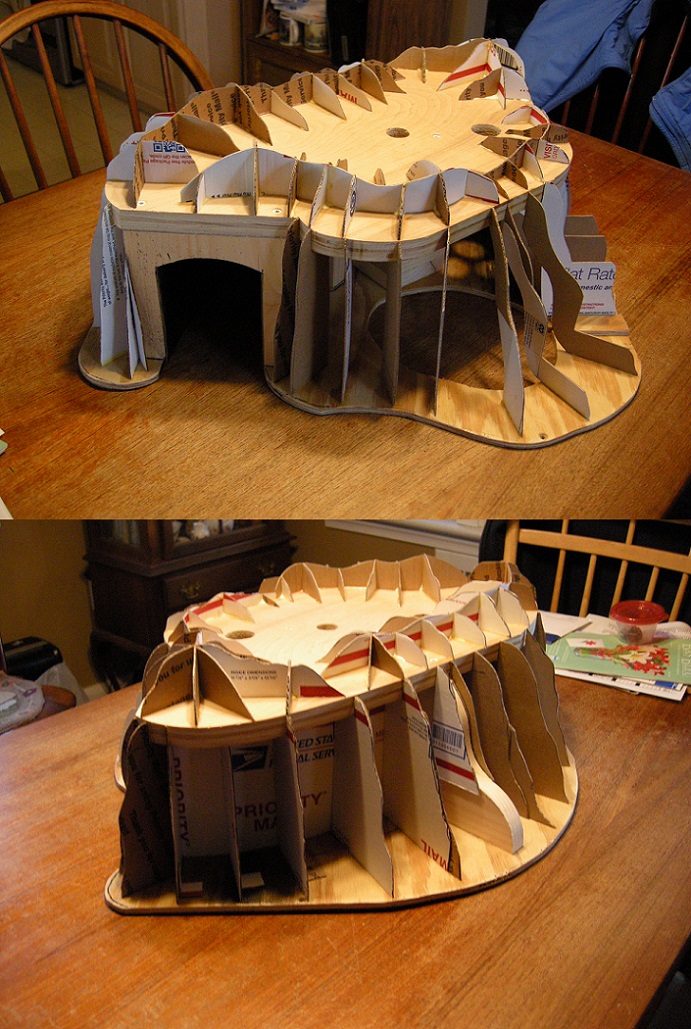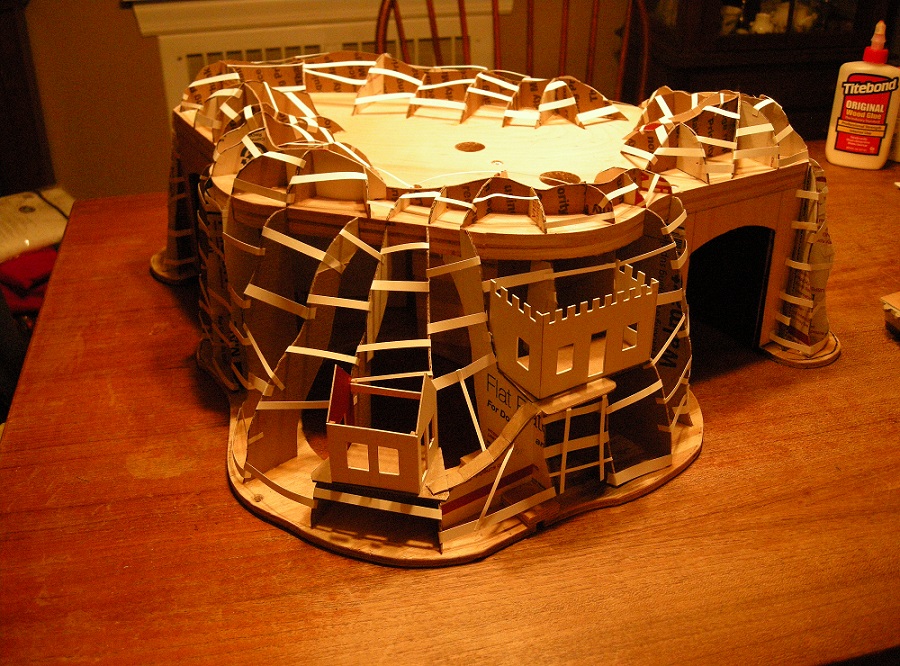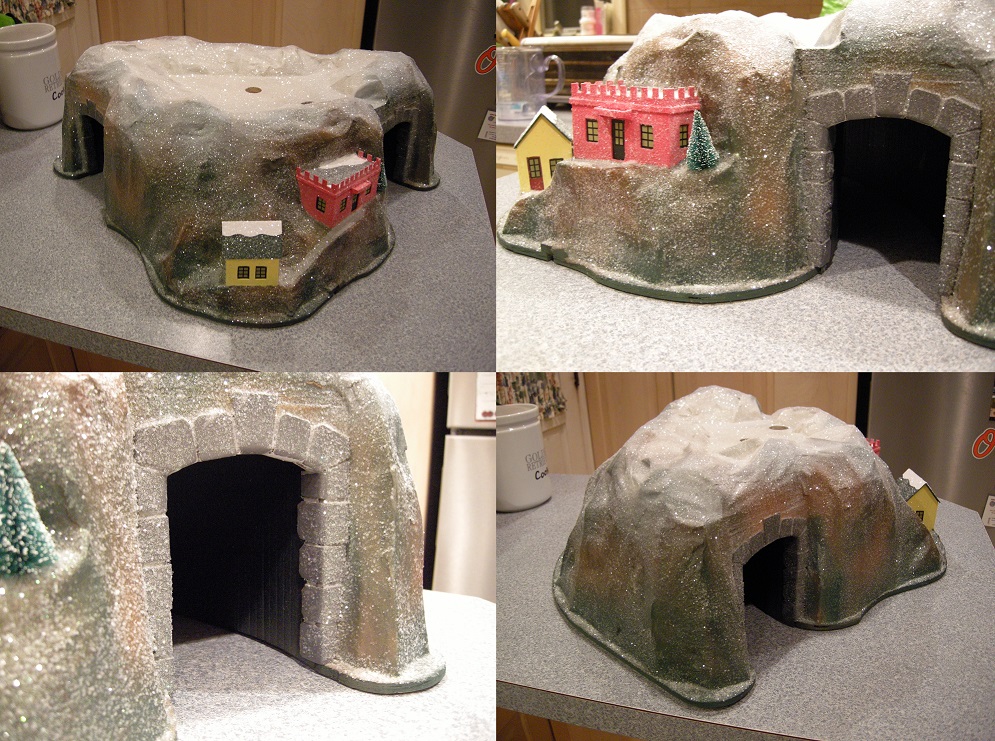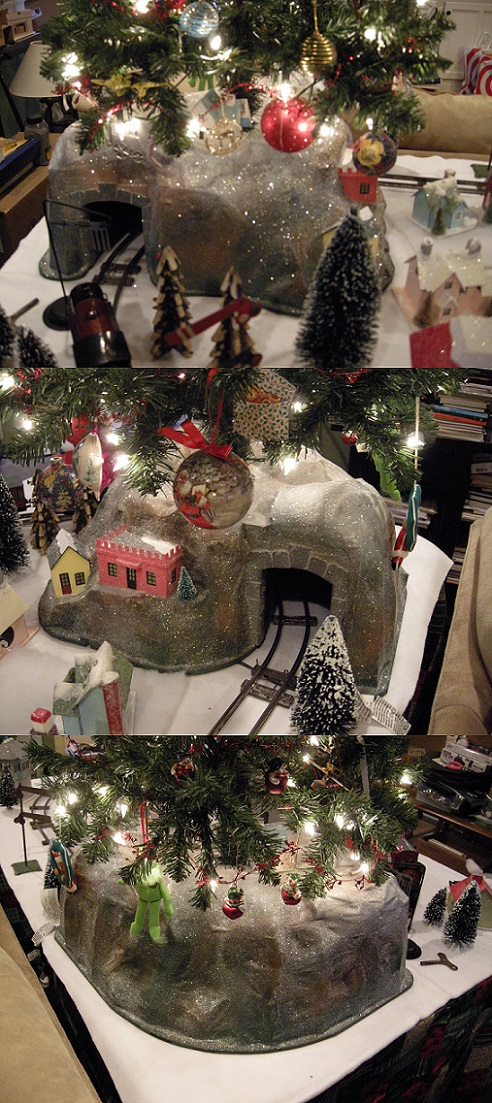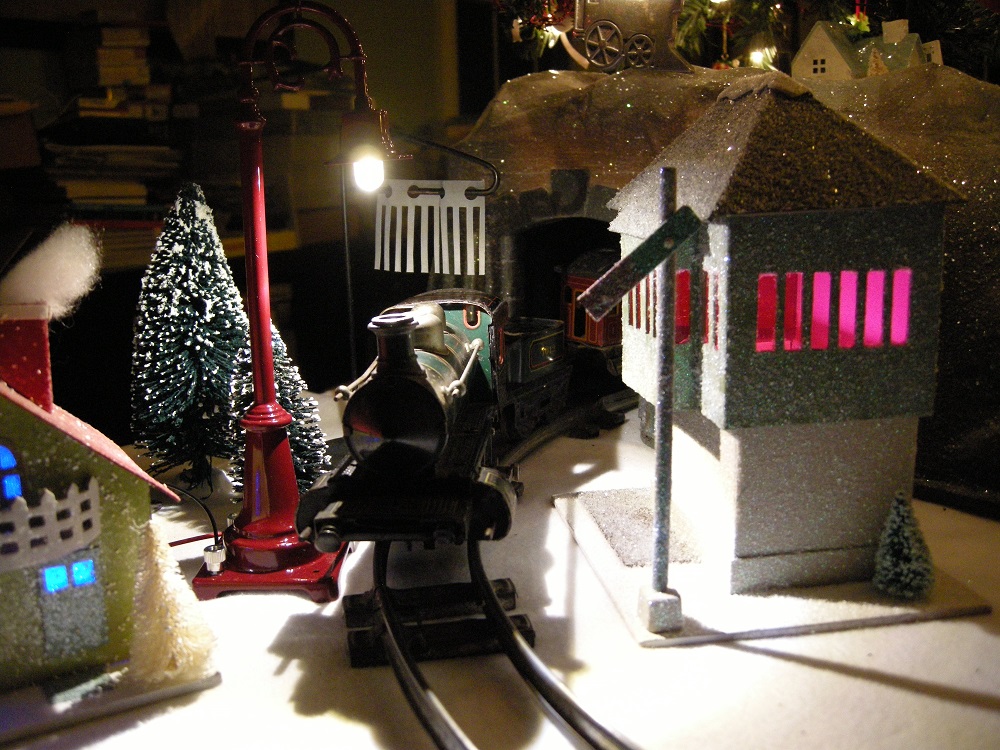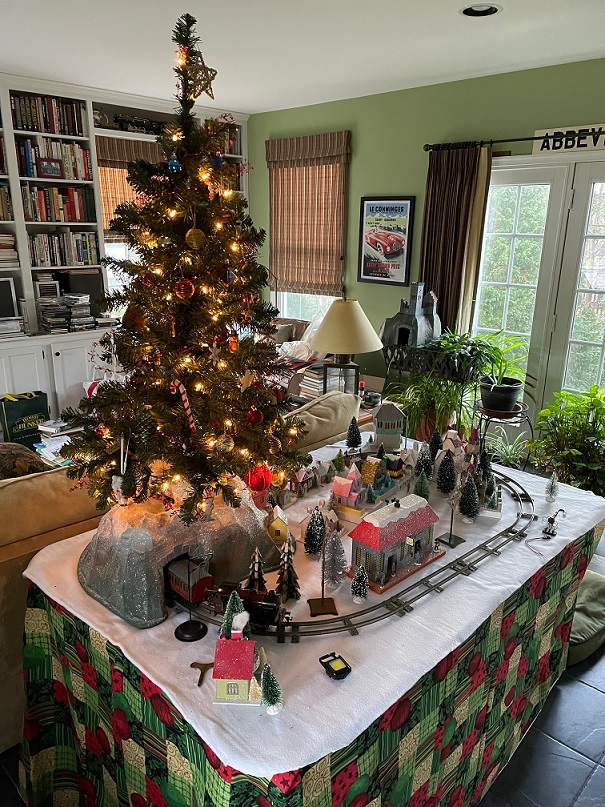As noted, this project found its genesis/inspiration in the castle-tunnel build. I wanted a way to incorporate a four-foot artificial pre-lit Christmas tree
into a putz village on a 40" x 58" table (serves as my desk the other ten months of the year). Disguising the four-legged steel stand had always been problematic, so why not make a stand somewhat putz-style, part of the scenery if you will. Using some model railroad techniques, it seemed relatively straight-forward to build something to serve that purpose, so off we went. One thing to be aware of, however; I tend to be a stream-of-consciousness style designer/builder, and there's a cost to that. I'll try to note my design/construction gaffes along the way.
The castle was built with a straight tunnel, but I knew that wouldn't work for a tree stand for a couple of reasons, the main one being the tree bit had to be dead-center in the structure to maximize the support. The best way to do that seemed to be to build the tunnel on a curve rather than straight, putting the tree-stand support just inside the radius of the curve. By doing this, I could keep the dimensions to roughly 20 inches square, which also worked best with the table dimensions I had.
The first step was to build a base. I used similar components as before (1/4-inch plywood for the base, 1x6 pine for the tunnel "portals". The two base pieces I cut to fit a 13-1/2 inch radius, the same as O-27 gauge track (also the radius of the Marklin clockwork track I have). I cut a hole in the center of the inside section of the base, figuring I might need access from the underside at some point. Then I cut the tunnel portals/supports 3-1/2 inches wide (just a quarter inch wider than those I made for the castle project) and 4-1/2 inches tall, slightly arched at the top. This was my first design mistake along the way, as despite having test run a number of cars along the track to check clearances, the tunnel proved too narrow for most of my small locos and cars to pass through without rubbing against the interior walls. When I redo this, the tunnel will be expanded in width and height to assure clear passage.
I used eight wood screws and a bit of Titebond glue to attach the portals to the two base sections. I find Titebond (Original) to be superior to most wood glues both in strength and its initial tackiness. Once that was dry, I used USPS corrugated to form the interior walls. I cut the stuff so that the "grain" of the corrugated ran vertically, notching it so that the walls reached the tops of the portals. This allowed fairly easy bending of the cardboard to form the curved walls of the tunnel. More Titebond and a few pushpins to hold everything in place. When dry, I had this:

The next step was to make the tree-stand support. I cut a bunch of four-inch square pieces and glued them together in a stack. If I'd had a piece of four-by-four, I could have used that, but I didn't and there are plenty of scraps in the workshop. I then glued the stack to the base, adding a couple of woodscrews from the underside. Once that was in place, I cut a top from a scrap of 3/4-inch birch plywood I had, then screwed the top of the block tower and the tunnel portals. Next, I drilled a 1-1/8 inch hole down through the top and into the block tower, about five or six inches deep. I test fit the tree into this hole to make sure (1) it fit at the base and (2) the base provided adequate support against tipping:
Attachment:
File comment: Tree test-fit
 Tunnel project d.jpg [ 303.43 KiB | Viewed 944 times ]
Tunnel project d.jpg [ 303.43 KiB | Viewed 944 times ]
Satisfied that it would be stable, I drilled a second hole down through the top to pass the power cord through, then a notch in the base for the cord to exit (that was my second design blunder...the notch should have been on the back side of the mountain, not the front). I added a contoured support to the back side between the top and the base to try to assure that the base remained flat, which it did. Now we had this:
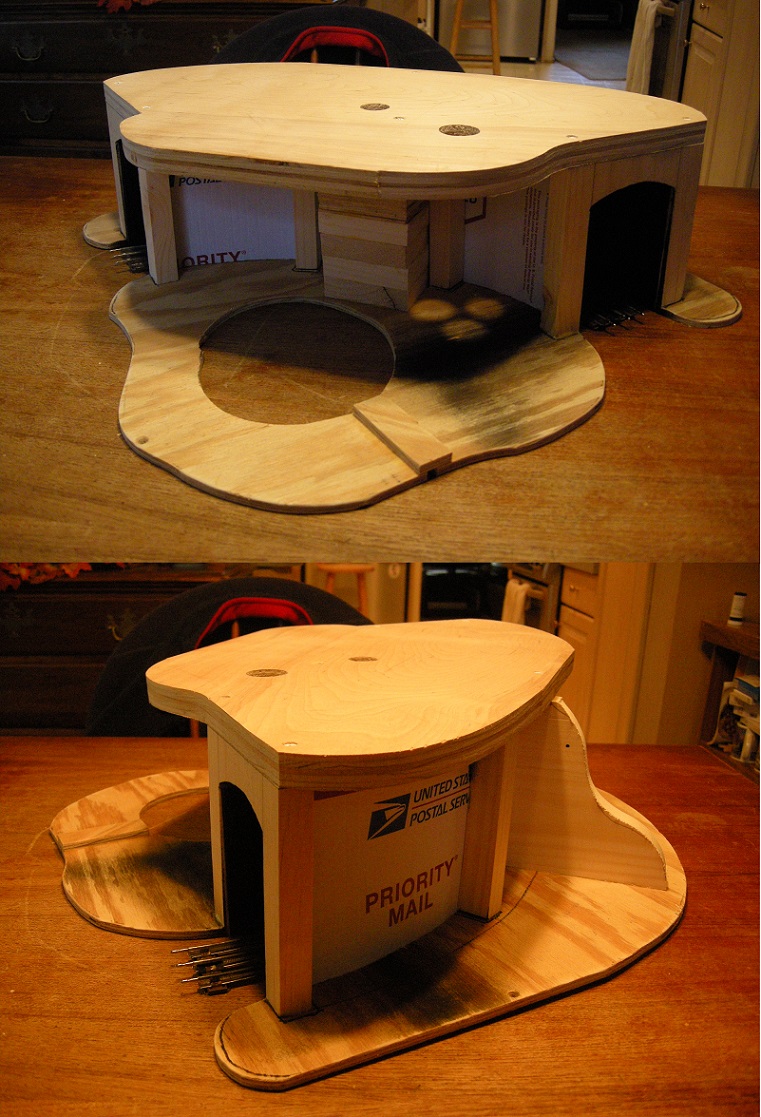
I let the whole thing dry for a couple days, then we were ready for some scenery.
I'm already exhausted












